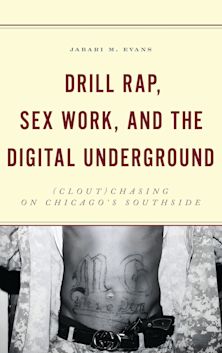- Home
- ACADEMIC
- Sociology
- Urban Sociology
- The Growth of Non-Western Cities
The Growth of Non-Western Cities
Primary and Secondary Urban Networking, c. 900–1900
Kenneth R. Hall (Anthology Editor) , Christopher Agnew (Contributor) , Michael H. Chiang (Contributor) , Hugh Clark (Contributor) , Marc Jason Gilbert (Contributor) , Elizabeth Lambourn (Contributor) , Peter Mentzel (Contributor) , Stephen Morillo (Contributor) , Hyunhee Park (Contributor) , Jay Spaulding (Contributor) , Aurea Toxqui (Contributor) , John K. Whitmore (Contributor)
The Growth of Non-Western Cities
Primary and Secondary Urban Networking, c. 900–1900
Kenneth R. Hall (Anthology Editor) , Christopher Agnew (Contributor) , Michael H. Chiang (Contributor) , Hugh Clark (Contributor) , Marc Jason Gilbert (Contributor) , Elizabeth Lambourn (Contributor) , Peter Mentzel (Contributor) , Stephen Morillo (Contributor) , Hyunhee Park (Contributor) , Jay Spaulding (Contributor) , Aurea Toxqui (Contributor) , John K. Whitmore (Contributor)
This product is usually dispatched within 3 days
- Delivery and returns info
-
Free US delivery on orders $35 or over
You must sign in to add this item to your wishlist. Please sign in or create an account
Description
These interdisciplinary studies address pre-1900 non-Western urban growth in the African Sudan, Mexico, the Ottoman Middle East, and South, Southeast, and East Asia. Therein, primary and secondary cities served as functional societal agents that were viable and potentially powerful alternatives to the diversity of kinship-based local or regional networks, the societal delegated spaces in which local and external agencies met and interacted in a wide variety of political, economic, spiritual, and military forms. They were variously transportation centers, sites of a central temples, court and secular administration centers, fortified military compounds, intellectual (literary) activity cores, and marketplace and/or craft production sites. One element of these urban centers' existence might have been more important than others, as a political capital, a cultural capital, or an economic capital. In the post-1500 era of increasing globalization, especially with the introduction of new technologies of transport, communication, and warfare, non-Western cities even more became the hubs of knowledge, societal, and cultural formation and exchange because of the location of both markets and political centers in urban areas. New forms of professionalism, militarization, and secular bureaucratization were foundational to centralizing state hierarchies that could exert more control over their networked segments. This book's authors consciously attempt to balance the histories of functional urban agency between the local and the exogenous, giving weight to local activities, events, beliefs, institutions, communities, individuals, and historical narratives. In several studies, both external and internal societal prejudices and the inability of key decision makers to understand indigenous reality led to negative consequences both in the local environment and in the global arena.
Table of Contents
Chapter 2 Chapter 1: Cities, Networks, and Cultures of Knowledge: A Global Overview
Part 3 Part I: Urban Networking in the Early Indian Ocean Realm
Chapter 4 Chapter 2: Port-City Networking in the Indian Ocean Commercial System Represented in Geographic and Cartographic Works in China and the Islamic West from c. 750 to 1500
Chapter 5 Chapter 3: Secondary Ports and Their Cults: Religious Innovation in the Port System of Greater Quangzhou (Southern China) in the 10th-12th Centuries
Chapter 6 Chapter 4: Buddhist Conversions and the Creation of Urban Hierarchies in Vietnam and Cambodia, c. 1000-1200
Chapter 7 Chapter 5: Why Did Le Van Thinh Revolt? Buddhism and Political Integration in Early 12th Century Dai Viet
Chapter 8 Chapter 6: Khuba and Muslim Networks in the Indian Ocean (Part II) - Timurid and Ottoman Engagements
Chapter 9 Chapter 7: Urbanization and Ironworking in the Nubian State Tradition
Part 10 Part II: Secondary Cities and Urban Networking in the Non-Western World, c. 1500-1900
Chapter 11 Chapter 8: Dengzhou and the Bohai Gulf in Seventeenth-Century Northeast Asia
Chapter 12 Chapter 9: The Origins of the Post Designation System in the Qing Field Administration Network
Chapter 13 Chapter 10: The Collapse of the English Trade Entrepôts at Pulo Condore and Banjarmasin and the Legacy of Early British East India Company Urban Network-Building in Southeast Asia
Chapter 14 Chapter 11: Taverns and Their Influence on the Suburban Culture of Late Nineteenth-Century Mexico City
Chapter 15 Chapter 12: Networks, Railroads, and Small Cities in the Ottoman Balkans
Product details
| Published | Aug 08 2011 |
|---|---|
| Format | Paperback |
| Edition | 1st |
| Extent | 358 |
| ISBN | 9780739149997 |
| Imprint | Lexington Books |
| Dimensions | 9 x 6 inches |
| Series | Comparative Urban Studies |
| Publisher | Bloomsbury Publishing |
About the contributors
Reviews
-
From the China Sea to the Persian Gulf-with excursions into Africa, Eastern Europe, and North America-the authors in this collection capture a world in motion. Through their eyes we see traders, government officials, and religious functionaries moving across shifting networks of commerce, culture, and faith-in the process shaping a world of cities that thrives far from the more familiar landmarks of western urbanism.
Eric Sandweiss, Indiana University
-
An interesting and wide-ranging study. . . . This book takes on an understudied and under-theorized topic and makes it accessible to the general reader. The comparative dimensions of the book will surely be important to a number of scholars working in different fields across the globe.
Eric Tagliacozzo, Cornell University
-
This collection brings together wide-ranging, creative scholarship that foregrounds ground-level connections across cities and cultures. Its fresh ecologies of knowledge provide stimulating new views of flows of peoples and ideas that help us rethink the construction of world networks without the blinders of a singular "Western gaze." Readers will appreciate the attention to rich texts and visual data and the connections that resonate across millennia and continents. The essays are especially stimulating in remapping Asian cities from grassroots and local hierarchies but have much wider implications for the present and future as well as recasting our gaze on Western urban networks as well.
Gary W. McDonogh, Bryn Mawr College
-
These 12 essays derive from a 2009 conference hosted by editor Hall at Ball State University. He challenged participants to employ new social scientific models of human networking to explore historical changes in non-Western urban systems. The essays present research on small cities in East and Southeast Asia, the Indian Ocean basin, Africa, Mexico, and the Ottoman Balkans that highlights internal local agency rather than external imperial pressures. The authors analyze documents and artifacts that elicit how local communities conceptualized their relationships with distant trading partners or hubs of power, and how they reconceptualized themselves as waves of migration, emerging economic opportunities, missionary visions, shifts in political boundaries, and, in the final essays, modernization reconfigured local social relations and ethnic interactions. The essays are informed by postcolonial theories applied to precolonial histories, but the case studies successfully put historical faces on the overarching theoretical framework. Europeans play peripheral roles in these essays, yet students of premodern European urban history have much to learn from this work. Figurative models of urban networks, maps, and photographs of archaeological sites and contemporary imagery enrich the text. Essay-specific endnotes. Summing Up: Recommended. Graduate students, faculty.
Choice Reviews


































